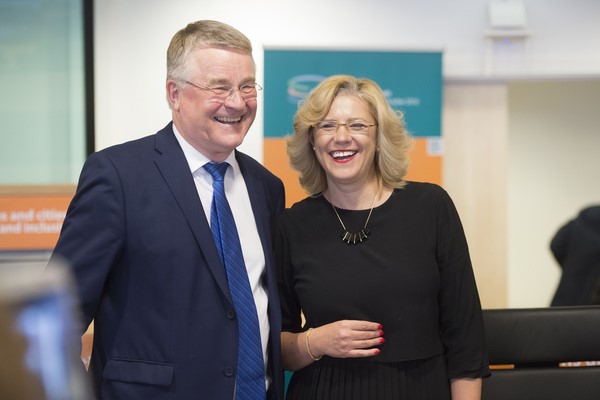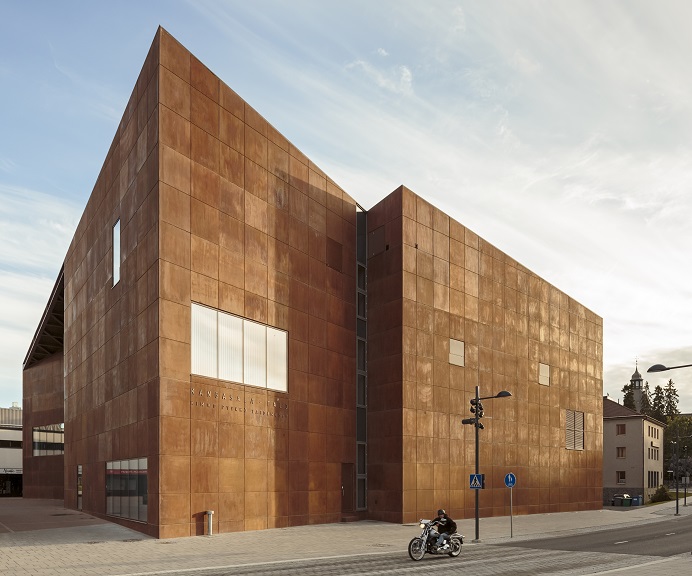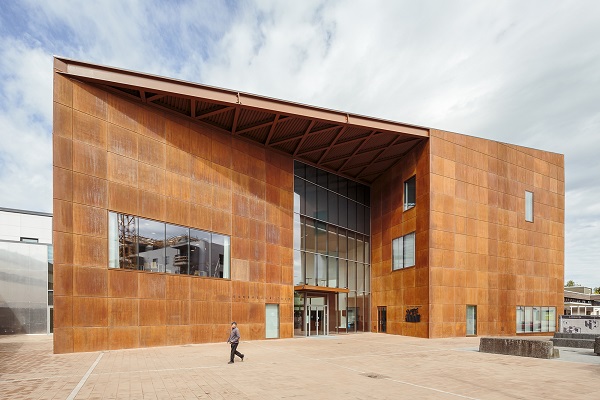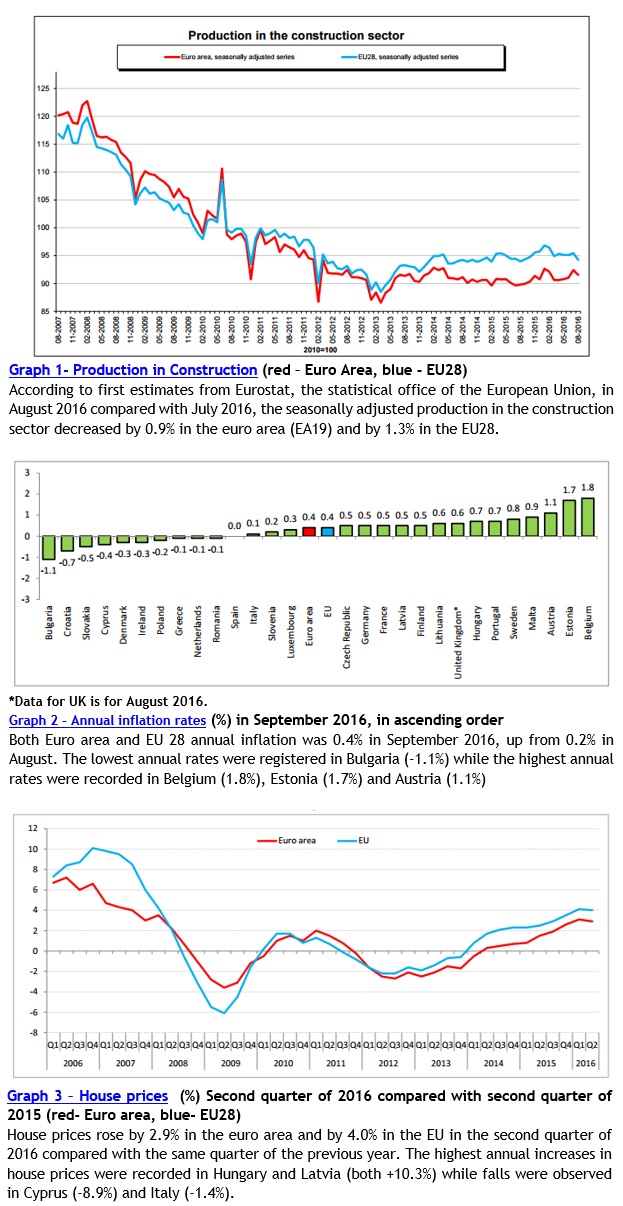Concrete Perspectives October 2016
Construction Sector
- The Concrete Initiative published a study entitled “Structural Thermal Energy Storage in Heavy Weight Buildings – Analysis and Recommendations to Provide Flexibility to The Electricity Grid”.
- On 11 October, at the Conference “Smart Cities – Cities of the Future” (Zagreb), Fire Safe Europe launched the key message “There are no smart cities without fire safe buildings”.
- Eurostat published 2016 edition of the statistical book entitled “Urban Europe”. The study aims at drawing attention to the important issues raised by the Habitat III conference, as well as providing an opportunity to present a wide range of EU statistics on urban territories.
- The kick off meeting of the VEEP Project took place on 19-20 October in Brussels. The project deals with the issue of “Cost-Effective Recycling of CDW in High Added Value Energy Efficient Prefabricated Concrete Components for Massive Retrofitting of our Built Environment”. The project is expected to run until September 2020.
- On 19 October 2016, SBS (the European association representing SMEs in
the standard making process at European and international levels) organised its 2016 EU Conference on “Smart standardisation for SMEs”. The conferenced touched upon issues such as the role of standards in boosting innovation and competitiveness of SMEs and their internationalisation, as well as an assessment of the standards regulation and the voluntary nature of standards.
- On 13 October, the 6th edition of Renovate Europe Day took place in Brussels. The event focused on “how achieving an NZEB building stock by 2050 can boost EU jobs, growth and SMEs and increase benefits to EU citizens and businesses”.
- EUPAVE (the European Concrete Paving Association) today released a joint publication with EAPA (the European Asphalt Pavement Association) and FEHRL (the Forum of European National Highway Research Laboratories) released a joint publication on CO2 savings by maintaining and upgrading roads.
Live from the European Union
European Week of Regions and Cities
The European Week of Regions and Cities (EWRC) was hold 10-13 October 2016. It is an annual Brussels-based four-day event during which officials from regions and cities’ administrations, as well as experts and academics, can exchange good practices and know-how in the field of regional and urban development. The European Week of Regions and Cities is the biggest European public event of its kind.
As part of the EWRC, to get local people more involved, 187 regions and cities are hosting at least one local event titled ‘Europe in my region/city’ during this week.
The State of European Cities Report 2016 – a short summary of it appeared in the previous edition of BIBM Newsletter- was published and now available for download here.
The 1 day of the EWRC stared with a closer look at challenges and opportunities to foster growth in regions and cities, how to create more jobs and more business-friendly environment.
Commissioner for Regional Policy, Corina Crețu opened the day

Corina Creţu, European Commissioner for Regional Policy and Markku Markkula, President of the European Committee of the Regions, 10 October 2016, Belgium – Brussels – © European Union / Anthony Dehez
On day 2, regional experts, policymakers and stakeholders discussed pressing issues such as circular economy (mostly concerning food waste) and energy poverty.
The workshop “Green solutions for energy poverty” discussed measures such as energy efficiency improvements, energy saving, sustainable energy systems, producing renewable energy locally and optimising transport needs. These measures were identified in order to achieve short, medium and long-term objectives. Best practices and initiatives were presented to help residents to improve the energy efficiency of their homes. Energy-efficient homes are also expected to be more resilient to future energy prices.
Day 3 focused on achieving better Cohesion Policy results and several challenges young people in Europe face, especially those in rural areas, and sustainable growth strategies for rural and urban areas. Issues ranging from governments’ digital transformation, peri-urban areas, open data and the Urban Agenda were discussed and debated.
The final day of the EWRC focused on reaching conclusions on a number of key issues such as on waste energy recovery, how to better manage EU Regional Funds and smart specialisation.
European Week of Regions and Cities – Programme
National Award Winner Project
The architectural award Concrete Facade 2015 has been given to Architects Heikkinen – Komonen Oy for their project Kangasala House.
This building combines high quality of architectural design with an innovative façade solution. The building complex has high architectural standard and the scale and details of the facades integrate the new building into the cultural landscape of a Finnish parish centre.

Kangasala House is an excellent example of using concrete, with sculptured facades and a
colour scheme of multiple nuances emphasising the endless possibilities offered by this building material.
The controlled scale of a relief-like grid extending over the facade surface gives the building sensitivity and character. The joints of the precast grid units are natural part of the grid without standing out from the rest of the joints.
The rust-coloured patinated facades together with the innovative architecture, connect the building to the colour shades of the old stone church and the
hillside landscape, as well as to the artworks of Kimmo Pyykkö.

The architects came up with the idea to dye the grey ordinary concrete surface to a brown shade that shines in sunlight to emphasise the dignity of the public building. At the same time; it was also a cost-effective way to implement an expressive whole within the tight budgetary framework.
The grey precast sandwich panels of the Kangasala House were patinated using the Umbra
patination method developed by Betonipallas Oy Perti Kukkonen. The treatment is executed over large surfaces crossing panel joints, and if necessary, it will also adjust any differences in the colour of the panels.
News in brief

Agenda
NOVEMBER
2 November 2016
Fire Safe Europe meeting
Brussels, Belgium
15 November 2016
ECP TF HEH
Brussels, Belgium
16 November 2016
BIBM Board meeting
Brussels, Belgium
17 November 2016
Concrete Dialogue – Concrete Initiative
Brussels, Belgium
22 November 2016
CPE workshop coordination of sustainability initiatives
Brussels, Belgium
22 November 2016
ECP TF Fire and Eurocodes
Brussels, Belgium
24-25 November 2016
CEN/TC 229
Vienna, Austria
30 November 2016
European Concrete Platform Board
Brussels, Belgium
30 November 2016
EMA meeting
Brussels, Belgium
DECEMBER
7 December 2016
CPE CPR implementation
Brussels, Belgium
8 December 2016
EU Technical Platform on simplified labelling
Brussels, Belgium
9 December 2016
Concrete Initiative AhG
Brussels, Belgium
JANUARY 2017
30 January 2017
ECP TF Sustainable Concrete
Webmeeting
To the Newsletter of Construction Products Europe (former CEPMC), please follow this link.
To read the Newsletter of CEMBUREAU, please follow this link. You can also subscribe directly following this link http://www.cembureau.eu/newsletter/subscriptions.
To read the Quarterly Newsletter of The Concrete Initiative, please follow this link.
List of Acronyms:
CPE – Construction Product Europe
DG GROW – Directorate-General for Internal Market, Industry, Entrepreneurship and SMEs
ECP – European Concrete Platform
EMA – European Masonry Alliance
IPHA – International Pre-stressed Hollowcore Association
TF – Task Force
